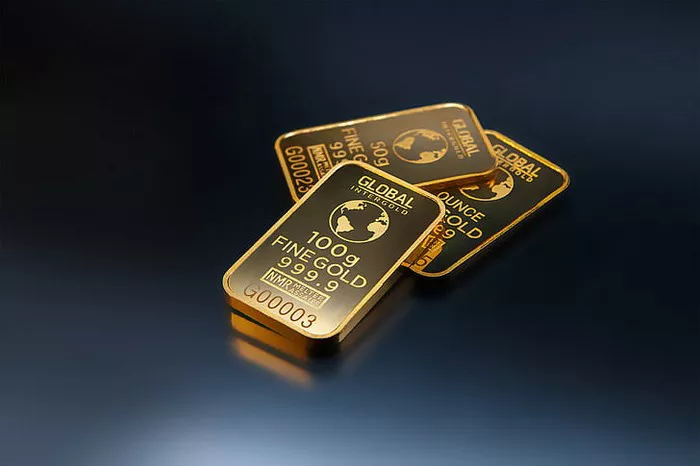Gold has long been revered as a symbol of wealth, security, and stability. Its price fluctuates based on a multitude of factors, including economic conditions, geopolitical events, and changes in market sentiment. This article delves into the price of gold in 1993, examining the historical context, monthly price breakdowns, influencing factors, and the broader economic landscape that characterized this pivotal year.
Historical Context of Gold in the Early 1990s
The Gold Market Before 1993
The early 1990s were marked by significant shifts in the global economy. Following the end of the Cold War and the dissolution of the Soviet Union, geopolitical dynamics began to change, affecting global markets, including gold. The early 1990s also followed a tumultuous decade for gold prices, which had experienced considerable volatility.
Key Economic Indicators
Inflation Rates: Inflation remained relatively low in the early 1990s, which influenced the demand for gold as a hedge against rising prices.
Interest Rates: The Federal Reserve’s monetary policy, including low-interest rates, created an environment where gold became more attractive as an investment.
Currency Strength: The U.S. dollar’s strength had a direct impact on gold prices, as gold is typically priced in dollars.
Gold Prices in 1993
Monthly Breakdown
In 1993, gold prices fluctuated significantly, reflecting changes in market conditions and investor sentiment. Below is a monthly breakdown of the average gold prices in 1993:
January: $339.00
February: $350.00
March: $358.00
April: $366.00
May: $357.00
June: $358.00
July: $352.00
August: $331.00
September: $339.00
October: $335.00
November: $332.00
December: $365.00
Average Price for 1993
The average price of gold for the year 1993 was approximately $348.50 per ounce. This figure reflects both the peaks and troughs of gold prices throughout the year.
Factors Influencing Gold Prices in 1993
1. Geopolitical Events
The geopolitical landscape significantly influenced gold prices in 1993. Events such as the Gulf War’s aftermath and ongoing tensions in Eastern Europe created uncertainty, prompting investors to seek the safety of gold.
Post-Gulf War Recovery: Following the Gulf War, the market stabilized, but the uncertainty surrounding Middle Eastern geopolitics continued to play a role in gold’s attractiveness.
2. Economic Conditions
The global economic recovery from previous recessions affected gold prices. As economies began to stabilize, the demand for gold shifted, impacting its value.
U.S. Economic Recovery: The U.S. economy was showing signs of recovery, which typically leads to decreased demand for gold as a safe-haven asset.
3. Central Bank Policies
Central banks around the world maintained gold reserves, influencing overall supply and demand dynamics in the market.
Gold Sales: Several central banks, including the Bank of England and the European Central Bank, began to adjust their gold holdings, which affected market perceptions of gold’s value.
4. Investor Sentiment
Investor sentiment in 1993 was influenced by a combination of economic recovery and geopolitical uncertainty. Market psychology played a significant role in determining gold prices.
Market Speculation: Speculation regarding future economic conditions and inflationary pressures drove investment strategies toward gold.
The Broader Economic Context
1. Global Economic Trends
In addition to domestic factors, global economic trends in 1993 impacted gold prices. Emerging markets began to play a more significant role in the global economy.
Emerging Markets: The growing economies in Asia and Latin America increased the demand for gold, particularly for jewelry and investment purposes.
2. Technological Advances in Mining
Technological advancements in gold mining and extraction techniques influenced the supply side of the market.
Increased Production Efficiency: Innovations in mining technology led to greater gold production, which could impact prices if supply outpaced demand.
3. Investment Trends
The investment landscape for gold began to evolve in the early 1990s, with more sophisticated financial instruments becoming available.
Emergence of Gold ETFs: Although gold exchange-traded funds (ETFs) were not yet widely available in 1993, the groundwork for future gold investment vehicles was being laid.
Analyzing Gold Price Trends in 1993
Price Volatility
Gold prices in 1993 exhibited a level of volatility influenced by various external factors. While the average price remained relatively stable, significant fluctuations occurred throughout the year.
Mid-Year Peaks: Gold prices peaked in April, reflecting heightened demand due to geopolitical tensions and economic uncertainty.
Comparison to Previous Years
When compared to previous years, gold prices in 1993 demonstrated a pattern of recovery from earlier lows. The average price was slightly higher than in 1992, reflecting a gradual increase in investor confidence.
Long-Term Trends
The trends observed in 1993 set the stage for the gold market in the years that followed. As economic conditions continued to evolve, so too did the factors influencing gold prices.
Conclusion
The price of gold in 1993 averaged approximately $348.50 per ounce, reflecting a complex interplay of geopolitical events, economic recovery, and investor sentiment. As the world emerged from a period of uncertainty, gold remained a critical asset for investors seeking stability.
Understanding the historical context of gold prices provides valuable insights into market dynamics that continue to influence investment decisions today. Whether viewed as a safe haven during times of uncertainty or as a long-term investment, gold’s role in the financial landscape remains significant.
As we reflect on the price of gold in 1993, it is essential to appreciate how historical events shape market perceptions and values, informing current investment strategies and decisions in the gold market.
Related topics:
- The Price of Gold in 1992: A Historical Overview
- The Price of Gold in 1991: A Comprehensive Overview
- The Price of Gold in 1988: A Historical Perspective


